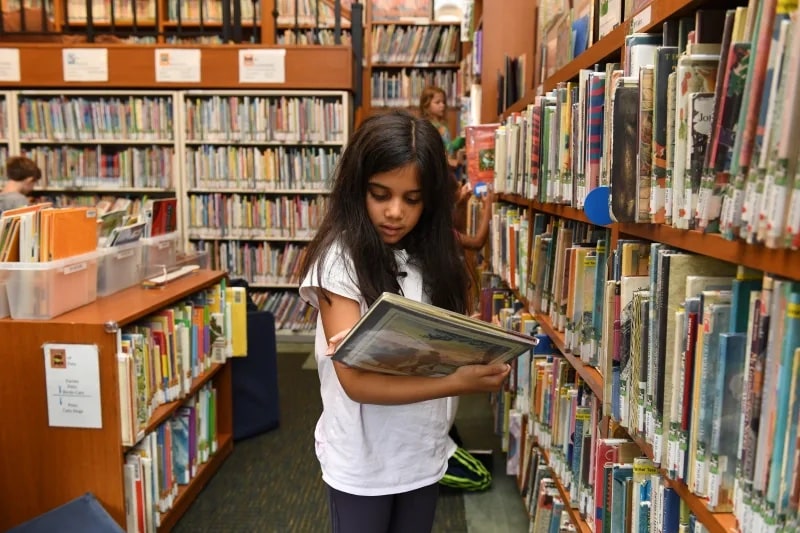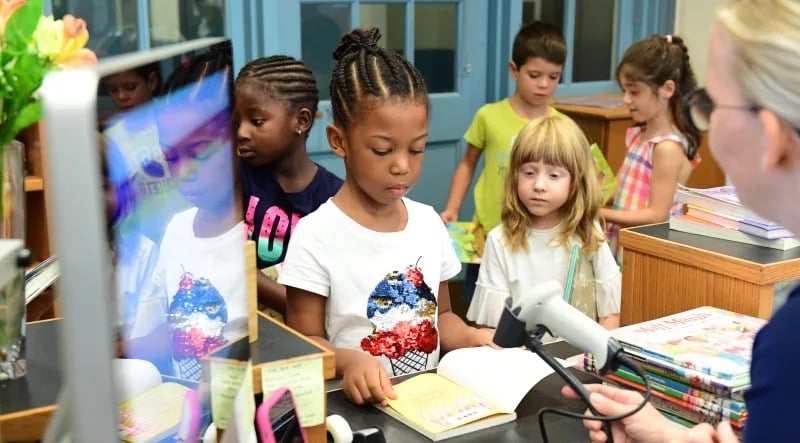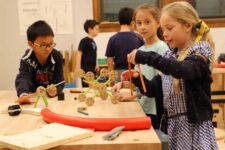Literacy is tantamount to lifelong learning. As a result, a foundational skill we teach children at the elementary school level is how to read. Here are some tools, broken down by age group, to help children enjoy reading. These are simple ways you can support your child’s reading development at home — and raise readers who read with confidence and joy.
What is skilled reading?
To begin, we’ll define what goes into skilled reading — it’s not just one skill, but a complicated set of skills that weave together as if they form a “reading rope,” a term coined by early language development and literacy researcher Hollis Scarborough. First, we draw from the world of language comprehension: background knowledge like facts and concepts, vocabulary, language structures like syntax and semantics, verbal reasoning, and literacy knowledge like genres. Language comprehension works alongside word recognition: syllables, spelling-sound relationship, and sight recognition of familiar words. Altogether, these are the abilities of skilled readers, which is what we want our students to be.
We aim to raise readers: children who are confident in their abilities and find joy in books. There are specific ways to foster a love and competence in reading, starting as young as infancy.
How to Raise Readers: Ages 0–4
If you want to raise a reader, be a reader. This means reading — a lot. You can be indiscriminate in your reading material; read cookbooks, magazines, signs in the neighborhood — anything counts! Research shows that the number of words an infant is exposed to has a direct impact on language development and literacy, so go for volume. Keep in mind that this language must be directed at the child — meaning that while the child should overhear conversations, children should also be engaged by the conversation. Narrate what you’re doing to your child as you cook dinner, or ask them questions about the book you’re reading to them. These are just a few ways you can foster a literacy-rich home.
You can also model reading habits for your children, especially by showing them that reading happens throughout the day, not just at bedtime. And remember that books aren’t sacred: you can tweak stories if needed.

Early Emergent Readers: Ages 4–5
As you and your child enter this stage, it’s critical that you remember that there will be progress and setbacks in equal measure. Learning is never a linear experience.
At this time, you’ll want to read with your child often. Find ways to include your emergent reader in story time without actually reading. For example, demonstrate the concepts of print: that we read left to right, or that we turn pages. And even though you may be doing the actual reading, children can use their comprehension skills and the pictures to “help” you read. Use the pictures as conversation topics to engage your child, or focus on repeated patterns that are common in children’s books, prompting your child to repeat the phrases with you.
Remember: reading should be beautiful, fun, “curiosity-quenching,” and inspiring. Equally important to literacy is the enjoyment of reading, and the sense of wonder it can foster.
Newly Emergent Readers: Ages 5–6
At this stage, your child is beginning to understand the alphabet, develop phonological awareness, learn early phonics, and command a number of high-frequency words.
As your child develops a grasp of comprehension strategies and word attack skills (ways to think through how to decode a word), help them to notice picture clues, see parts of words and make them into a whole, and connect and discuss words they know. During this time, keep reading to your child from different genres, and note that your child is developing fluency skills and benefits from repeated reading of the same text.

Emergent Readers: Ages 6–8
Reading is becoming more automatic, with more energy devoted to comprehension than word attack skills. Readers are approaching independence in comprehending text, and you can support this progress by reading with your child and discussing stories.
Ask questions like:
- What is the message? Why?
- Why do you think the character did…? What makes you think that?
- What do you think is going to happen?
Fluent Readers: Ages 8–10
At this stage, readers have moved from “learning to read” to “reading to learn.” They’re devoting energy to understanding, and they have a good command and use of various comprehension strategies.
You should continue to read with your child, especially about varied, unfamiliar topics. Now is also the time to help your child figure out ways to understand unfamiliar vocabulary when they come across new terms, being especially mindful to explain words in relation to other words, giving your child context to deepen their understanding.
With these tools, you’re equipped to supplement the work we do in our classrooms toward fostering a lifelong mastery and love of reading. Reading is — in so many ways — a type of freedom, and it’s our responsibility to give our children the skills they need to read with fluency and confidence. With these steps, they’ll be well on their way.



